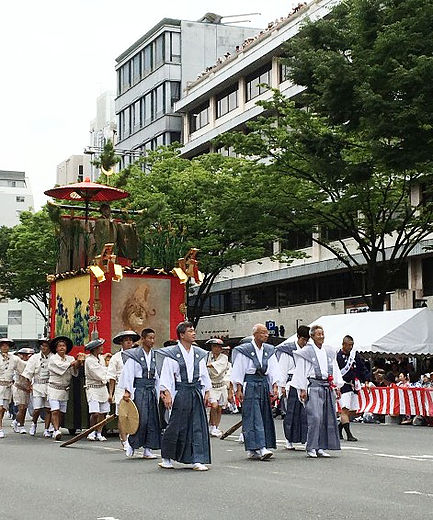京都着物レンタル夢館
I live in Hoko-cho (鉾町, communities which preserve/maintain floats of Gion Festival and operate the procession), however, I do not join the procession. Well, believe or not, women are still banned from it. We just work at the backstage. My role is to help the guys in the community to get dressed in the traditional formal attire called Kamishimo (裃).
Probably you have seen Kamishimo in Japanese history dramas. It is a set of formal Kimono originated in the Edo (江戸) period, which consists of a sleeveless top with a big wide shoulder, and Hakama (袴) pants. It was mainly worn by Samurai (侍), but also by peasants and merchants at their weddings if they could afford. After Taiseihoukan (大政奉還, the Restoration of Imperial Rule), the Meiji (明治) government banned their officials to wear Kamishimo. Today, Kamishimo can be seen only at traditional events and ceremonies or history dramas.
Originally, Kamishimo was made of cotton, but later linen ones became more common. High ranked Samurai often wore order-made Kamishimo made of silk with raised patterns called Ryumon (龍紋).
Ones with normal length Hakama are called Han-Kamishimo (半裃, half Kamishimo), whereas the ones with one and a half times length Hakama are called Naga-Kamishimo (長裃). When wearing Naga-Kamishimo, the legs are completely contained in the Hakama pants which look like trains. Naga-kamishimo is regarded as the most formal attire.
Today, Kamishimo is also used in Kabuki (歌舞伎) plays, in which the Hakama length is twice long, so as to look impressive. Obviously, Kabuki people knew the advent of Instagram.
Click here to see a Blog by a Former Maiko, “Do You Know?”




